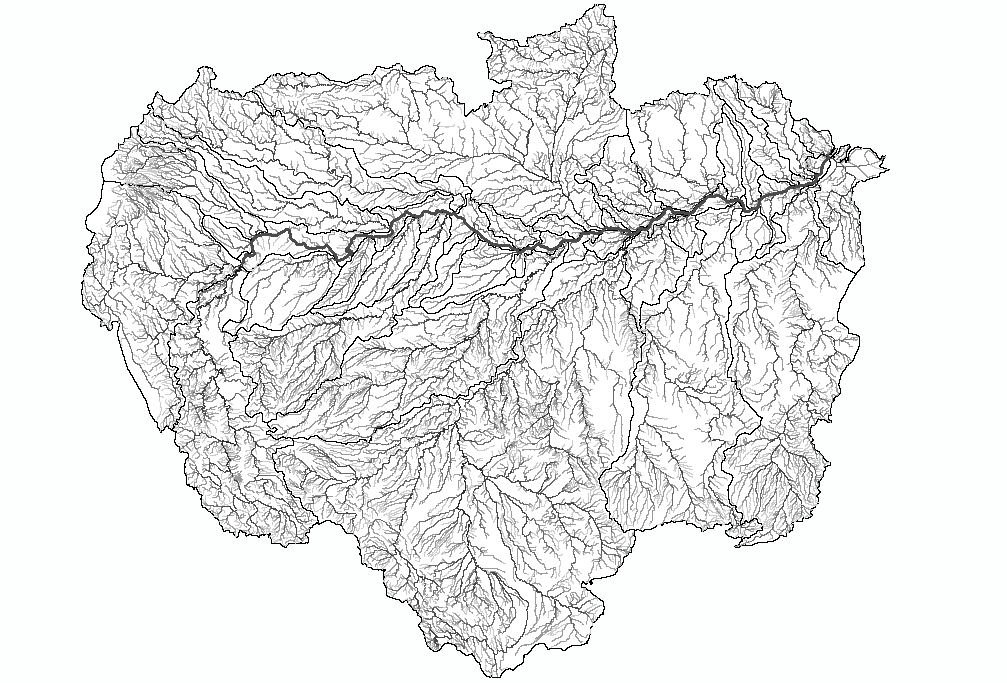Amazon Basin River Network Map


Alex Cartwright
Senior Cartographer & GIS Specialist
Alex Cartwright is a renowned cartographer and geographic information systems specialist with over 15 years of experience in spatial analysis and data...
Geographic Analysis
What This Map Shows
The "River Network in the Amazon Basin Map" provides a comprehensive visualization of the intricate waterways that define one of the world's most biodiverse regions. Unlike typical river systems that flow distinctly across solid land, the Amazon basin showcases a complex web of rivers, streams, and marshlands. This vast network is not merely a collection of rivers, but rather a dynamic and interconnected hydrological system that encompasses both permanent waterways and seasonal floods that create expansive marshes and wetlands.
Deep Dive into the Amazon River System
The Amazon River itself, often heralded as the longest river in the world, is the centerpiece of this vast network. Spanning over 4,000 miles, it flows through multiple countries including Peru, Colombia, and Brazil, ultimately emptying into the Atlantic Ocean. Interestingly, the Amazon River's basin covers approximately 2.7 million square miles, making it the largest river basin on the planet.
What sets this region apart is not only the sheer size of the river but also the intricate systems of tributaries that feed into it. The Amazon boasts over 1,000 tributaries, with around 17 of them exceeding 1,000 kilometers in length. These tributaries, like the Madeira, Tapajós, and Purus rivers, create a network that allows for a rich exchange of nutrients and biodiversity.
The flow patterns within the Amazon Basin are heavily influenced by the seasonal rains. During the wet season, rivers swell, and vast stretches of land are submerged, transforming the landscape into an extensive marsh. This phenomenon is crucial for the ecosystem, as it provides an essential habitat for countless species of plants and animals, many of which are endemic to the region. Have you ever considered how these seasonal changes impact local wildlife?
In addition to supporting biodiversity, the river system plays a vital role in the livelihoods of the local population. Indigenous communities, as well as those engaged in agriculture and fishing, depend on the rivers for sustenance. The Amazon River’s rich resources have allowed these communities to thrive for centuries, demonstrating a deep connection between the people and their environment.
Regional Analysis
Examining the Amazon basin regionally reveals significant variations in the river network and its ecological impact. For instance, the western part of the basin, particularly in Peru, features steep Andean foothills where rivers descend rapidly, creating waterfalls and rapids. Conversely, as one travels eastward into Brazil, the terrain flattens, and the rivers slow down, spreading out into wider channels and creating vast floodplains.
In the northern areas, such as the Brazilian states of Pará and Amapá, the rivers are often interspersed with islands and wetlands, leading to a rich habitat for wildlife. Notably, the Guiana Shield region is characterized by its ancient rock formations and unique ecosystems. Here, the rivers often meander slowly, creating a more static water environment compared to the turbulent tributaries in the Andes.
Interestingly, the human impact varies greatly within these regions. In areas closer to urban centers like Manaus, deforestation and development threaten the river systems. These human activities can disrupt the delicate balance of the ecosystem, leading to negative consequences for both wildlife and local communities that rely on the rivers.
Significance and Impact
Understanding the river network in the Amazon basin is crucial for several reasons. Firstly, it highlights the importance of preserving one of the world’s most critical ecosystems. The Amazon rainforest, often referred to as the 'lungs of the Earth,' plays a vital role in carbon sequestration, influencing global climate patterns. Protecting the river systems is essential for maintaining the health of the rainforest and, by extension, our planet.
Moreover, the Amazon River network is a lifeline for millions of people. As globalization increases, the pressures on this environment continue to grow. Current trends indicate that as agriculture and industry expand, the delicate rivers and wetlands face threats from pollution, habitat destruction, and climate change. Future projections suggest that without proactive conservation efforts, we may witness significant alterations to this precious ecosystem.
In conclusion, the river network in the Amazon basin is not just a geographical feature; it embodies the complex interplay between nature, biodiversity, and human existence. Preserving this intricate system is not just an environmental concern; it's a crucial step toward safeguarding our planet's future. What will you do to contribute to the preservation of this vital region?
Visualization Details
- Published
- August 14, 2025
- Views
- 180
Comments
Loading comments...